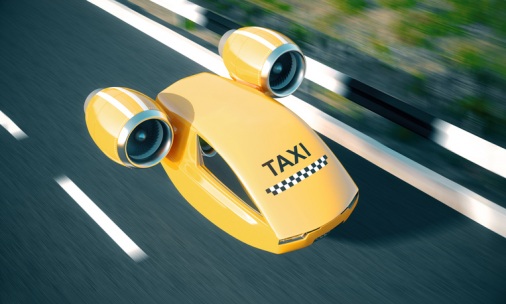The latest innovations in global transport, energy, technology and science

These transport, energy and technology innovations – some far-sighted, others just pipe dreams – have popped up on the MS Amlin radar.
Airbus jet for VIPs
Airbus’s latest aeroplane has everything a billionaire could possibly desire – from a king-size bed to an en-suite bathroom with a soothing rain shower. More importantly, the A220-100 business jet has a range of up to 10,500km (6,500 miles), allowing it to connect travellers between major cities such as London and Los Angeles or Tokyo and Dubai.
Inside, the 73-square-metre cabin accommodates up to 18 passengers and boasts the widest seats in its class. There’s also wifi and electro-chromatic windows that offer privacy at the touch of a button.
Tempted? Around US$70 million buys you “the quietest, cleanest and most eco-friendly aircraft in its category”. According to Airbus, this model burns up to 25 per cent less fuel than the previous generation of aircraft.
Diamonds are a ship’s best friend
High-tech navigation systems such as satellite GPS are increasingly vulnerable to cyber attacks. Indeed, the US Naval Academy now considers this such a viable threat that it teaches its students how to navigate via the stars.
But what if you could use diamonds, rather than satellites, to navigate the oceans? US defense contractor Lockheed Martin has come up with a prototype magnetometer – codenamed Dark Ice – that uses synthetic diamonds to measure the direction and strength of the Earth’s magnetic field. When combined with a magnetic field map, this gadget can pinpoint a vessel’s location down to the nearest 50 metres.
“The technology doesn’t signal or transmit anything,” says Michael DiMario, principal engineer on the project. “It can’t be hacked or jammed. A nuclear blast might jam it, but not a lot else.”
While not yet as precise as GPS, it’s hoped that future versions of the technology could stop cyber-pirates terrorising the high-seas.
NASA’s high-tech toilet
NASA has delivered a $23million toilet to the International Space Station. Called the Universal Waste Management System, it’s a zero-gravity toilet that uses airflow to suck up human waste when the lid is lifted.
Crucially, the device’s improved vacuum capability should help reduce bad smells in space where, as NASA astronaut Jason Hutt said, “There’s no Febreze, Glade, or candles allowed.”
The titanium system is NASA’s first major toilet redesign in nearly 30 years and is both smaller and lighter than the current toilet in use.
Once the design has been tested on the space station, it will be built into the Orion capsules that will carry astronauts to the Moon in 2024. It could even help space travellers “boldly go” during deep space missions to Mars, says NASA.
Hyundai’s walking car
Hyundai has unveiled designs for a car which will be able to walk. Described as a “Transformer-class vehicle”, it has four robotic legs designed to help it conquer extreme terrain. They’re calling it Elevate.
If it was ever built, it would apparently be able to climb a 1.5-metre wall, step over a 1.5-metre gap and spread its legs to span a track over four metres wide – all while keeping its main cabin (and passengers) level.
“When a tsunami or earthquake hits, current rescue vehicles can only deliver first responders to the edge of the debris field,” explains Hyundai vice-president John Suh. “Elevate can drive to the scene and climb right over flood debris or crumbled concrete.”
Hyundai isn’t the only vehicle manufacturer looking beyond traditional cars. Toyota is currently developing a hydrogen-powered lunar rover for Japan’s 2030 mission to the Moon.
Tidal energy making waves
The world’s most powerful tidal turbine is nearing completion. Orbital Marine Power’s O2 2MW is due to be installed at the European Marine Energy Centre – in Scotland’s Orkney Islands – by the end of 2020.
The 73-metre-long, cigar-shaped, floating superstructure supports two 1-MW turbines with 20-metre-long rotor blades. Powerful underwater currents will spin the blades to generate enough electricity for 1,700 UK homes.
Andrew Scott is the company’s CEO. “The turbine will unlock tidal markets around the world at a competitive price point and provide a new, predictable renewable energy option,” he says.
According to the European Commission, which helped facilitate the project, tidal turbines could contribute up to 10 per cent of the European Union’s power demand by 2050
Royal Navy testing smart boat
Britain’s Royal Navy has begun trials of its first ever crewless boat. The BAE Systems unmanned Pacific 24 rigid inflatable boat is capable of patrolling autonomously for 45 hours or pursuing hostile targets at speeds of 38 knots (44mph) for over 100 miles.
Rigid inflatables are typically used for missions such as landing troops, or raiding boats suspected of drug-smuggling. In the future, the Pacific 24 could be equipped with a remote-controlled 12.7-mm machine gun controlled by a human operator based on shore, allowing the craft to tackle dangerous missions without risk to users.
BAE Systems and the Royal Navy are conducting trials to determine whether the Pacific 24 will become part of the regular fleet.
Need to book an air taxi?
Drone-style air taxis could ease traffic congestion and slash journey times. One company leading the way is German aviation start-up Volocopter, which is inviting the public to ride in its battery-powered 18-rotor VoloCity – a vertical take-off and landing vehicle. Tickets for the 15-minute flights – due to take place in 2023 at a secret location – will cost around £275.
In the meantime, Volocopter says it will begin the world’s first full-scale electric air taxi trial in 2021 at Pontoise Aerodrome, just northwest of Paris.
“While the final certification for air taxis is still pending, we do have a realistic timeline to launch commercial VoloCity flights in the next two to three years,” says the company’s chief commercial officer Christian Bauer.
Bionic eye aims to restore sight
Science has long dreamed of restoring sight to the blind. Now, advances in brain implant technology have placed this medical miracle within reach.
A team of researchers at Australia’s Monash University has invented a pair of glasses featuring a tiny video camera and a wireless transmitter. Pictures from the camera are transmitted to a tiny brain implant, converted into electrical impulses, and fed to neurons in the brain through electrodes thinner than a human hair. They’ve named it Gennaris.
If the idea sounds familiar, it might be because Elon Musk recently unveiled a pig with a computer chip in its brain to demonstrate his company Neuralink. Musk hopes to build a similar brain-to-human interface that will allow the paralysed to walk.
Authored by MS Amlin
About MS Amlin
MS Amlin is a leading global specialty commercial insurer and reinsurer with operations in the Lloyd’s, UK, Continental European and Bermudian markets.
Comprising Mitsui Sumitomo’s London and Bermuda-based operations and the historic Amlin businesses, MS Amlin specialises in providing insurance cover for a wide range of risks to commercial enterprises and reinsurance protection to other insurers around the world.
It is wholly owned and fully supported by the financial strength and scale of MS&AD of Japan, the eighth largest non-life insurer in the world. To learn more, visit www.msamlin.com.

